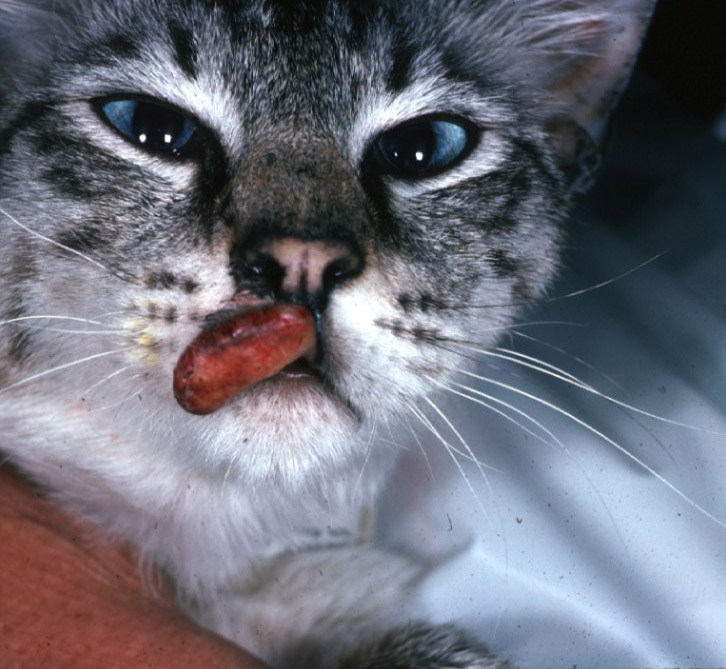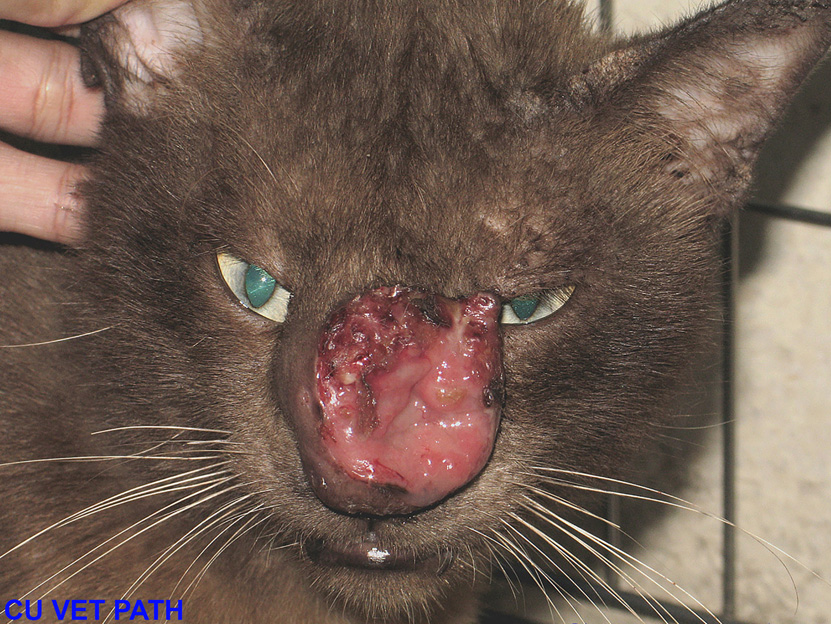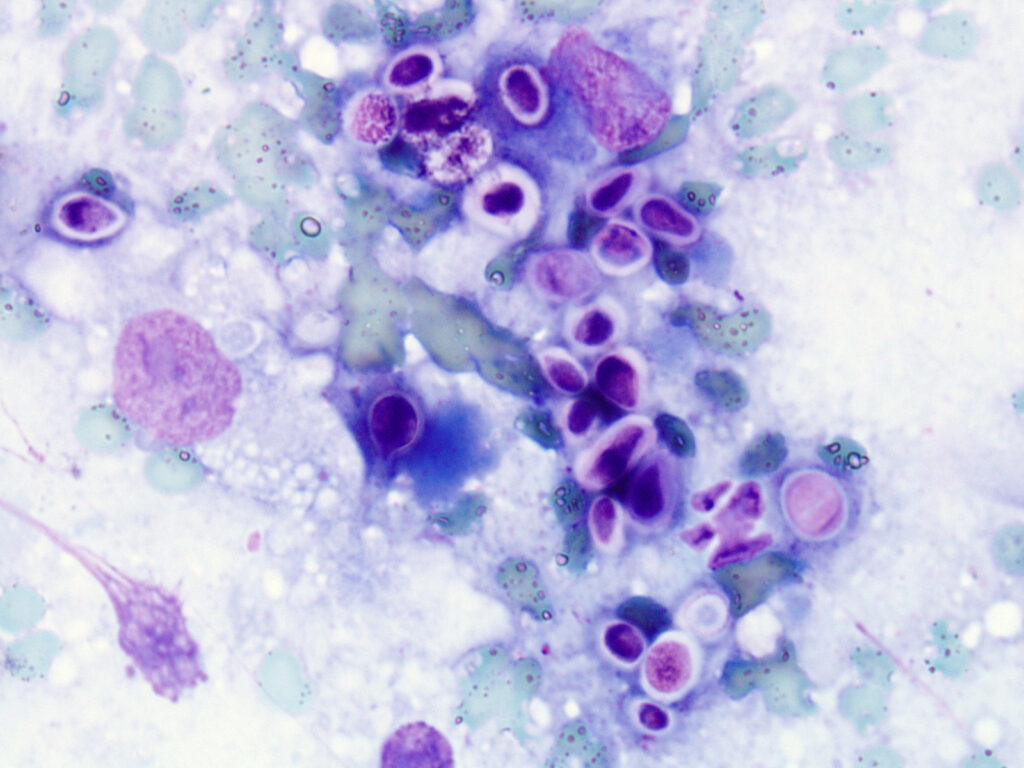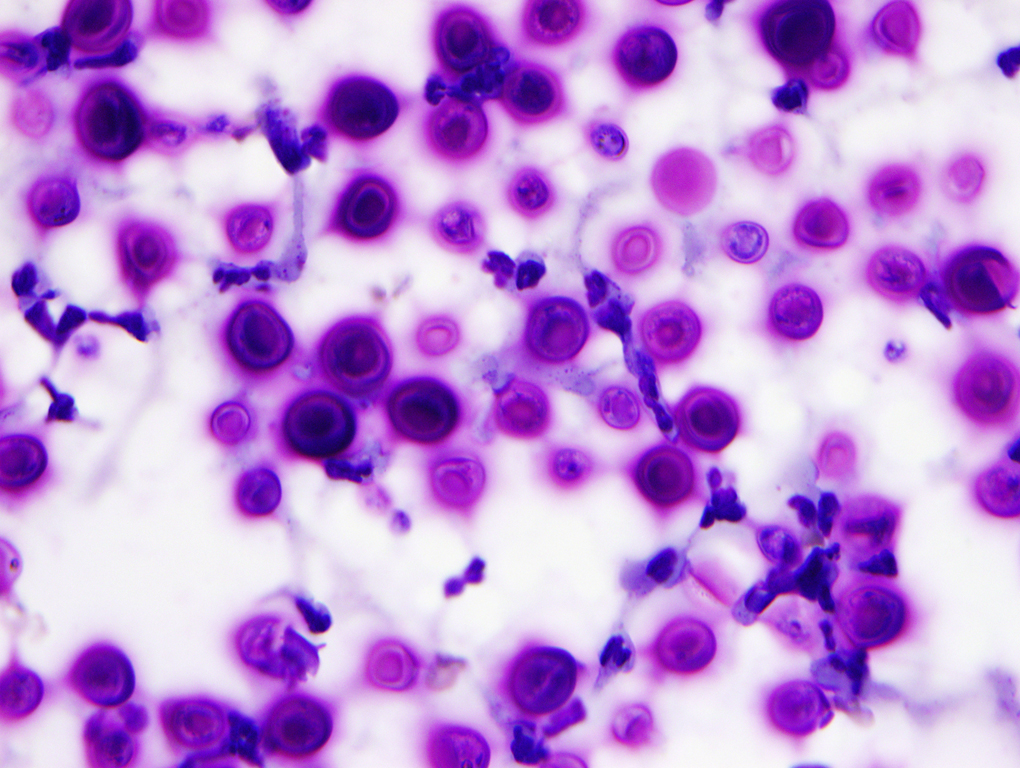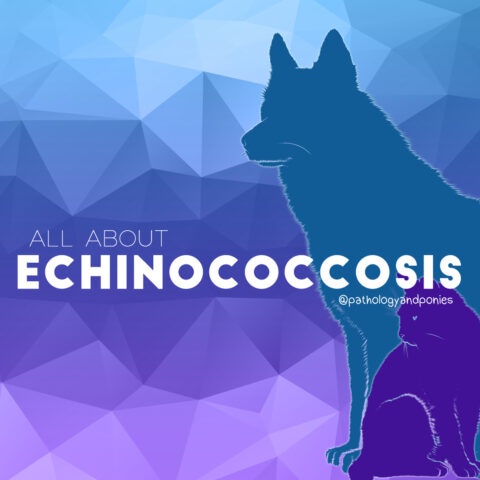Today’s path rounds are on 𝐜𝐫𝐲𝐩𝐭𝐨𝐜𝐨𝐜𝐜𝐨𝐬𝐢𝐬!
𝐖𝐡𝐚𝐭 𝐢𝐬 𝐢𝐭?
𝐂𝐫𝐲𝐩𝐭𝐨𝐜𝐨𝐜𝐜𝐨𝐬𝐢𝐬 is a disease caused by the fungal pathogen 𝐂𝐫𝐲𝐩𝐭𝐨𝐜𝐨𝐜𝐜𝐮𝐬. This fungus can be found around the world!
𝐖𝐡𝐨 𝐠𝐞𝐭𝐬 𝐢𝐭?
Any species can get this! However, we most commonly think of it in cats.
𝐖𝐡𝐚𝐭 𝐜𝐚𝐮𝐬𝐞𝐬 𝐢𝐭?
Cryptococcus is typically found in the soil, decaying organic matter, or bird 𝐠𝐮𝐚𝐧𝐨 (the fancy word for poop). Typically, the animal will become infected when it inhales small spores or yeasts of the fungus. The spores will settle into the alveoli of the lungs, and gain access into the bloodstream. From there, the fungus spreads all around the body, forming 𝐠𝐫𝐚𝐧𝐮𝐥𝐨𝐦𝐚𝐬 (nodules of cell debris).
𝐖𝐡𝐲 𝐢𝐬 𝐭𝐡𝐢𝐬 𝐚 𝐩𝐫𝐨𝐛𝐥𝐞𝐦?
As a general rule, your internal organs don’t like having strange, foreign invaders! Depending on the organ affected, you may see a wide variety of clinical signs. For example, granulomas in the brain can cause neurologic signs like 𝐚𝐭𝐚𝐱𝐢𝐚 (irregular gait) or seizures. Lesions in the eyes can cause blindness. Lesions in the skin can become ulcerated and painful. Etc, etc.
For kitties, most of the time Cryptococcus stays limited to the upper respiratory tract. This can cause sneezing and nasal discharge in mild forms, but severe cases can have formation of large granulomas that distort the shape of the nose.
𝐇𝐨𝐰 𝐢𝐬 𝐢𝐭 𝐝𝐢𝐚𝐠𝐧𝐨𝐬𝐞𝐝?
This diagnosis is fairly easy to make, as you can see the yeasts of Cryptococcus under the microscope! So veterinarians can either submit a 𝐛𝐢𝐨𝐩𝐬𝐲 of a granuloma, or they can do a 𝐬𝐦𝐞𝐚𝐫 of nasal discharge on a slide to see the fungus directly.
𝐇𝐨𝐰 𝐢𝐬 𝐢𝐭 𝐭𝐫𝐞𝐚𝐭𝐞𝐝?
Cryptococcus is susceptible to our common antifungals, like 𝐟𝐥𝐮𝐜𝐨𝐧𝐚𝐳𝐨𝐥𝐞 or 𝐢𝐭𝐫𝐚𝐜𝐨𝐧𝐚𝐳𝐨𝐥𝐞. The prognosis for mild cases is quite good, however more severe cases with widely dispersed granulomas may have a poorer prognosis.
𝐏𝐡𝐨𝐭𝐨𝐬
1-2) Some poor kitties with large granulomas deforming their facial structure.
3) An example of Cryptococcus granulomas in the nasal passage of a horse.
4) A granuloma in the brain!
5-6) What a pathologist might see on a 𝐜𝐲𝐭𝐨𝐥𝐨𝐠𝐲, or a smear of affected fluids. Can you see the thick walled yeasts?
𝐒𝐨𝐮𝐫𝐜𝐞𝐬
Maxie, G. Jubb, Kennedy and Palmer’s Pathology of Domestic Animals, Volume 2. Sixth Edition.
Taboada J. Cryptococcosis. Merck Veterinary Manual 2020.
Photos 1-6 © Noah’s Arkive contributors Camus, Scruggs, Kesdangsakonwut, Acland, Holshuh, Moore licensed under CC BY-SA 4.0.

